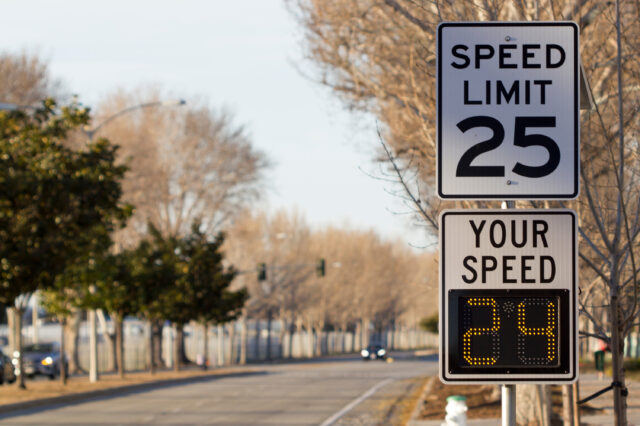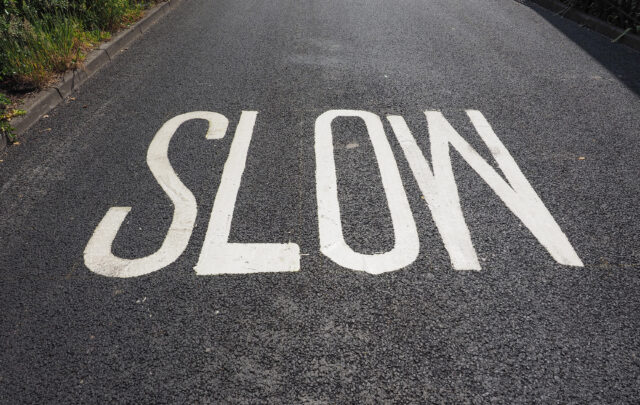Speed Limit Reduction: How to Establish Safe Speeds in Your Community

Excessive speed contributes to countless roadway fatalities and serious injuries every year, leaving a lasting impact on communities nationwide. Despite advances in vehicle safety and infrastructure design, speeding remains a critical factor in preventable crashes. Establishing appropriate speed limits is one of the most effective tools communities can use to promote safe driving behavior and save lives. However, changing existing speed limits involves navigating a complex process that blends regulatory and engineering expertise.
Here, we explore the importance of safe speeds, the regulatory framework for establishing speed limits, and proven methods for determining appropriate limits. Drawing on our experience supporting municipalities in reducing speed limits, we address key questions to help guide your community toward safer streets.
Why Are Safe Speeds Important?
Nationally, the number of fatal and serious injury crashes has remained substantially unchanged in recent decades, highlighting the need for new approaches to safety that provide an effective transportation system for all users.
To that end, the U.S. Department of Transportation adopted the Safe System Approach as the guiding paradigm for addressing roadway safety. One key objective of the Safe System Approach is to establish safer speeds, which offer benefits such as improved visibility, additional driver reaction time to avoid collisions, and minimized impact forces during crashes—ultimately increasing the likelihood of survival.
 Lower speed limits are a proven safety countermeasure. Data from the Town of Irondequoit, New York, shows a 10% reduction in fatal crashes and a 7% reduction in injury crashes following the Town’s reduction of its speed limit from 35 miles per hour (mph) to 30 mph in 2018.
Lower speed limits are a proven safety countermeasure. Data from the Town of Irondequoit, New York, shows a 10% reduction in fatal crashes and a 7% reduction in injury crashes following the Town’s reduction of its speed limit from 35 miles per hour (mph) to 30 mph in 2018.
Other studies have shown that a 5-mph reduction in posted speed limits has contributed to reductions in fatal and injury crashes as high as 50% in urban areas and 40% in rural areas.
What Is the Process to Establish Speed Limits?
Speed limits are set by state and local governments; therefore, the process to establish them varies by jurisdiction. According to the federal Manual on Uniform Traffic Control Devices, which serves as the national standard for signage, striping, traffic signals, and more, speed limits generally fall into two categories.
The first category is statutory speed limits, which are maximum allowed speeds for a given type of roadway, established by state law. The second category is speed zones, which establish alternative speed limits based on engineering studies.
The ability to establish a speed zone may be delegated from the state to a county or municipality. For example, the New York State Vehicle and Traffic Law allows towns and counties to petition the New York State Department of Transportation to set speed limits as low as 25 mph after completing an engineering study.
What Methods Are Used to Set Appropriate Speed Limits?
There is no single “right” speed limit for a given roadway. Instead, the established speed limit should reflect the context and character of the roadway and its users. Guidance from the Federal Highway Administration (FHWA) recommends that speed limits be related to crash risk, provide a reasonable basis for enforcement, be fair in the context of traffic law, and be accepted as reasonable by a majority of road users. This approach strikes a balance between safety, travel time, and feasibility of enforcement.
Several methods are commonly used to identify speed limits that meet the above criteria. An engineering approach may establish speed limits based on observed operating speeds, with adjustments for traffic and infrastructure conditions. Alternatively, an expert systems approach uses computerized models—such as USLIMITS2, developed by FHWA—to simulate the judgment of speed limit experts. The injury minimization approach establishes speed limits according to anticipated crash types and expected impact forces. Another streamlined approach for urban areas involves setting speed limits based on the density of conflict points and the level of activity on major streets.
The Journey Toward Safer Streets
Establishing safer speed limits is a vital step toward reducing roadway fatalities and creating transportation systems that prioritize the safety of all users. The process requires balancing technical expertise, community context, and regulatory frameworks. By understanding the importance of safe speeds, navigating the complexities of speed limit regulations, and utilizing data-driven methods to set appropriate limits, municipalities can take meaningful action to improve road safety.
As communities continue to adopt the Safe System Approach, collaboration among stakeholders—including engineers, policymakers, and residents—will be crucial to ensure that speed limits reflect the needs of all road users. Whether through statutory adjustments, engineering studies, or innovative modeling tools, the journey toward safer streets starts with a commitment to change.

About the Author
Jesse Vogl, AICPPrincipal Transportation Planner
As a dedicated Transportation Planner with over 11 years of experience in multi-modal transportation planning and operations, Jesse specializes in active transportation planning, including bicycles and pedestrians, traffic studies, transit operations analysis, service planning, and scheduling. His expertise also extends to safety assessments, advanced GIS software, data collection, grant writing, and report preparation.
Jesse has worked closely with municipalities, metropolitan planning organizations, stakeholders, and the public on transportation studies, leveraging GIS and visual planning tools to effectively communicate complex, data-intensive results. He leads traffic, transit, bicycle, and pedestrian analyses, including assessing origin-destination patterns using large datasets. In addition to his technical skills, Jesse excels in public engagement, successfully leading public meetings, workshops, and pop-up events, as well as developing websites and preparing virtual engagement content.